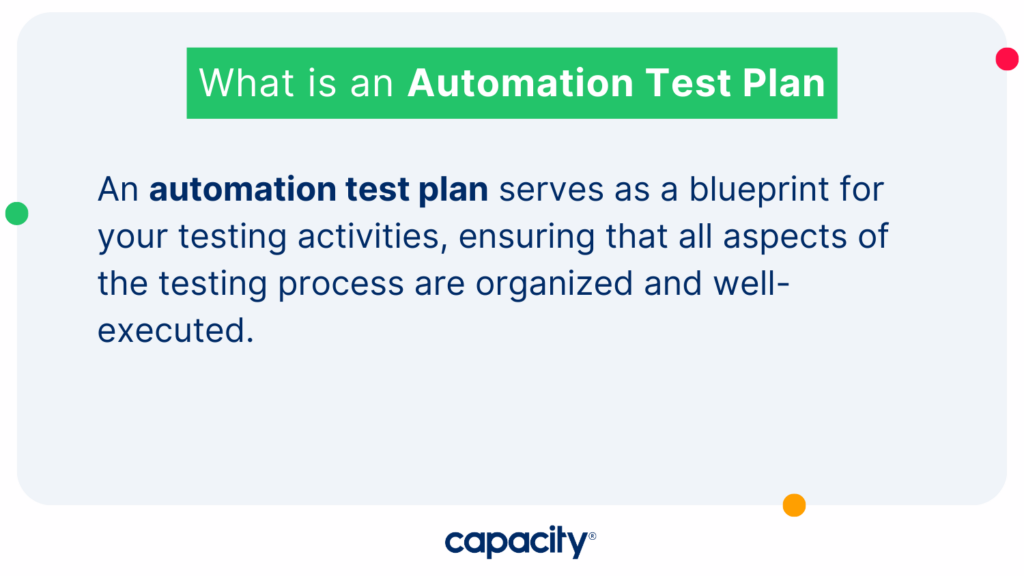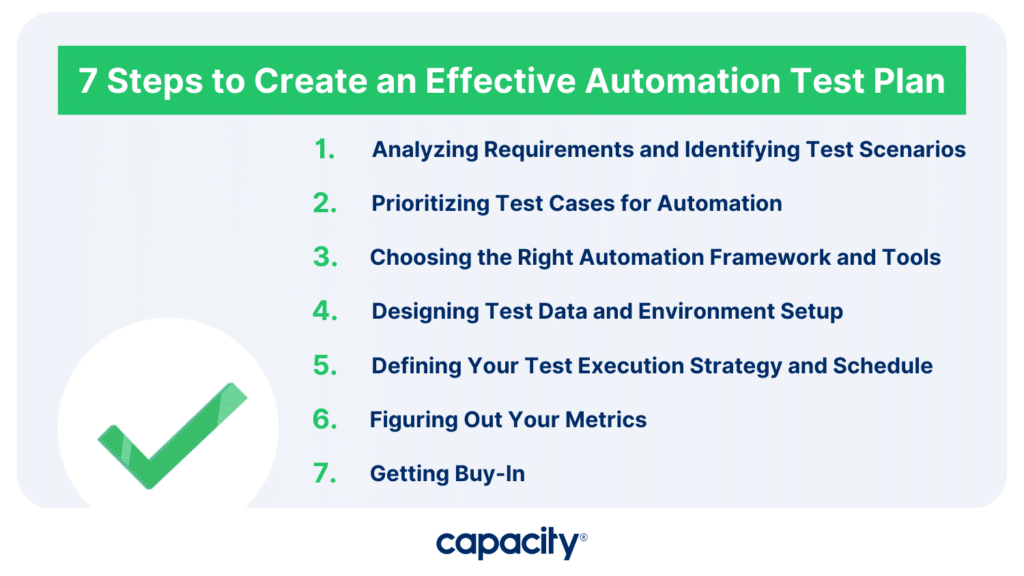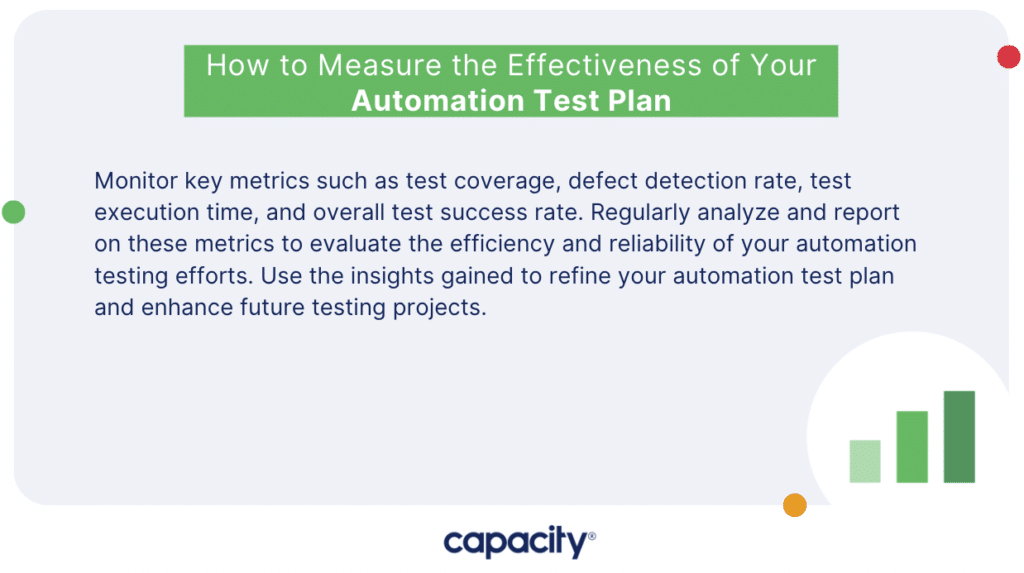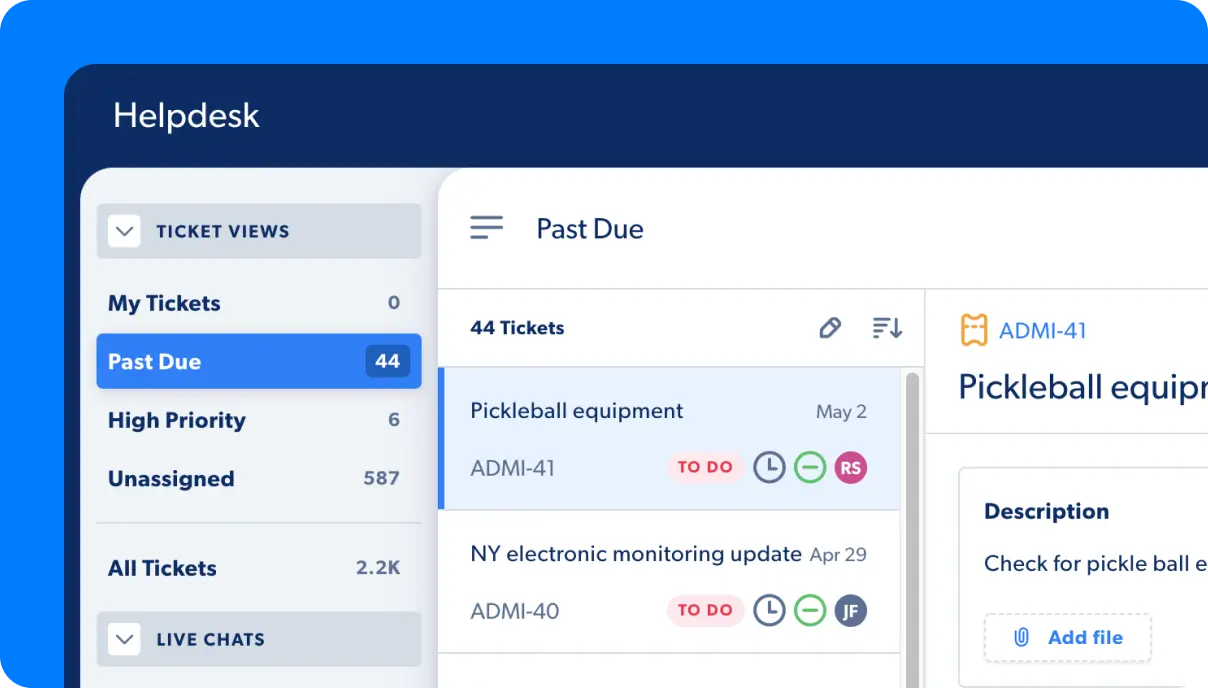Automation has become a key driver in software development and testing. An automation test plan plays a crucial role in ensuring the success of your project by outlining the scope, goals, objectives, resource planning, estimates, and responsibilities of everyone involved. In this article, we will guide you through the process of creating an effective automation test plan. Whether you’re part of the IT crowd or involved in operations, this article will provide valuable insights to help you streamline your automation testing efforts. Let’s dive in and discover the steps to write a comprehensive automation test plan.
Understanding Automation Test Planning

Before we delve into the details of creating an automation test plan, let’s first understand its significance. An automation test plan serves as a blueprint for your testing activities, ensuring that all aspects of the testing process are organized and well-executed. It provides a structured approach to validate the functionality, reliability, and performance of your software applications. By outlining the scope, objectives, and responsibilities, an automation test plan helps align the entire team and ensures a smooth testing process.
What to Include in Your Automation Test Plan
A well-rounded automation test plan should include the following components:
- Scope: Define the boundaries of your testing efforts, including the functionalities, modules, or systems that will be covered by automation testing.
- Goals and Objectives: Clearly state the goals and objectives of your automation testing, such as improving test coverage, reducing manual effort, increasing test accuracy, or enhancing overall product quality.
- Resource Planning: Identify the resources required for automation testing, including personnel, tools, equipment, and infrastructure.
- Test Environment: Describe the test environment setup, including hardware, software, network configurations, and any dependencies necessary for testing.
- Test Data: Define the test data needed to execute your automated tests effectively. Consider various scenarios and data combinations to ensure comprehensive coverage.
- Test Execution Strategy: Outline the approach you will follow for test execution, including the sequencing of test cases, test data management, and handling of test environments.
- Test Schedule: Develop a timeline for executing your automation tests, considering project milestones, dependencies, and delivery deadlines.
- Test Metrics: Determine the metrics you will track to measure the effectiveness and efficiency of your automation testing efforts. These may include test coverage, defect density, test execution time, and overall test success rate.
- Roles and Responsibilities: Clearly define the roles and responsibilities of each team member involved in automation testing, ensuring accountability and a shared understanding of expectations.
7 Steps to Create an Effective Automation Test Plan

1. Analyzing Requirements and Identifying Test Scenarios
Start by thoroughly analyzing the project requirements and identifying relevant test scenarios. This step helps you understand the functionalities that need to be tested and ensures comprehensive coverage.
2. Prioritizing Test Cases for Automation
Not all test cases need to be automated. Prioritize the test cases based on their complexity, frequency of execution, and business criticality. Focus on automating high-priority test cases to maximize efficiency.
3. Choosing the Right Automation Framework and Tools
Selecting the appropriate automation framework and tools is crucial for successful test automation. Consider factors such as the application under test, programming language preferences, ease of use, and community support when choosing.
4. Designing Test Data and Environment Setup
Designing relevant and realistic test data is essential for effective automation testing. Additionally, set up a stable and consistent test environment that closely resembles the production environment to ensure accurate test results.
5. Defining Your Test Execution Strategy and Schedule
Define the strategy for executing your automated tests. Determine the sequencing of test cases, establish dependencies, and create a test schedule that aligns with project timelines.
6. Figuring Out Your Metrics
Identify the metrics that align with your automation goals and objectives. Track these metrics throughout the testing process to gain insights into the effectiveness and efficiency of your automation efforts.
7. Getting Buy-In
To ensure the success of your automation test plan, it is crucial to gain buy-in from all stakeholders. Communicate the benefits of automation testing, address concerns, and involve key decision-makers early in the process.
A Few Best Practices to Consider When Writing Your Automation Test Plan
To enhance the effectiveness of your automation test plan, keep the following best practices in mind:
- Keep the plan concise, focused, and easy to understand. Avoid unnecessary technical jargon and ensure readability for all team members.
- Regularly review and update the test plan to accommodate changes in project requirements, technologies, or testing objectives.
- Collaborate with stakeholders to gather their input and ensure their requirements are reflected in the test plan.
- Conduct regular meetings or checkpoints to discuss progress, address challenges, and make any necessary adjustments to the test plan.
Measuring the Effectiveness of Your Automation Test Plan

Measuring the effectiveness of your automation test plan is essential to track progress and identify areas for improvement. Monitor key metrics such as test coverage, defect detection rate, test execution time, and overall test success rate. Regularly analyze and report on these metrics to evaluate the efficiency and reliability of your automation testing efforts. Use the insights gained to refine your automation test plan and enhance future testing projects.
Creating a comprehensive automation test plan is crucial for the success of your software development projects. By following the steps outlined in this article and considering best practices, you can ensure that your automation testing efforts are well-organized, efficient, and effective. A well-crafted automation test plan provides a roadmap for your testing activities, helps align the team, and maximizes the benefits of automation. Remember the importance of collaboration, regular updates, and measurement to continuously improve your automation testing processes. With a solid automation test plan in place, you can confidently execute your tests and deliver high-quality software to your stakeholders. Try Capacity for free now!

Automate Your Work
Capacity’s enterprise AI chatbot can help:
- Answer FAQs anytime, anywhere
- Find relevant documents within seconds
- Give surveys and collect feedback














































